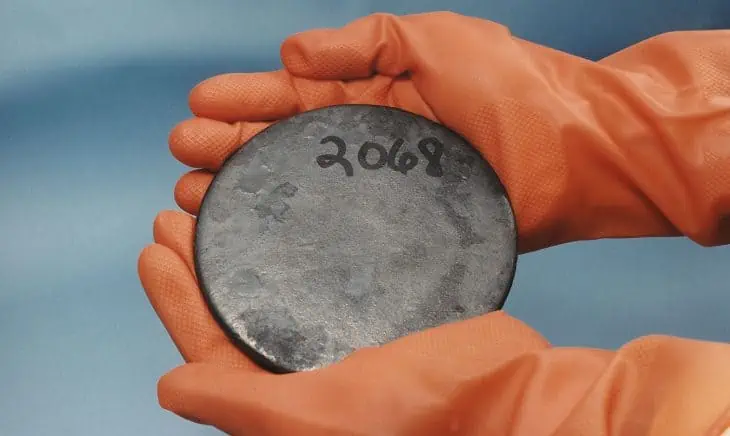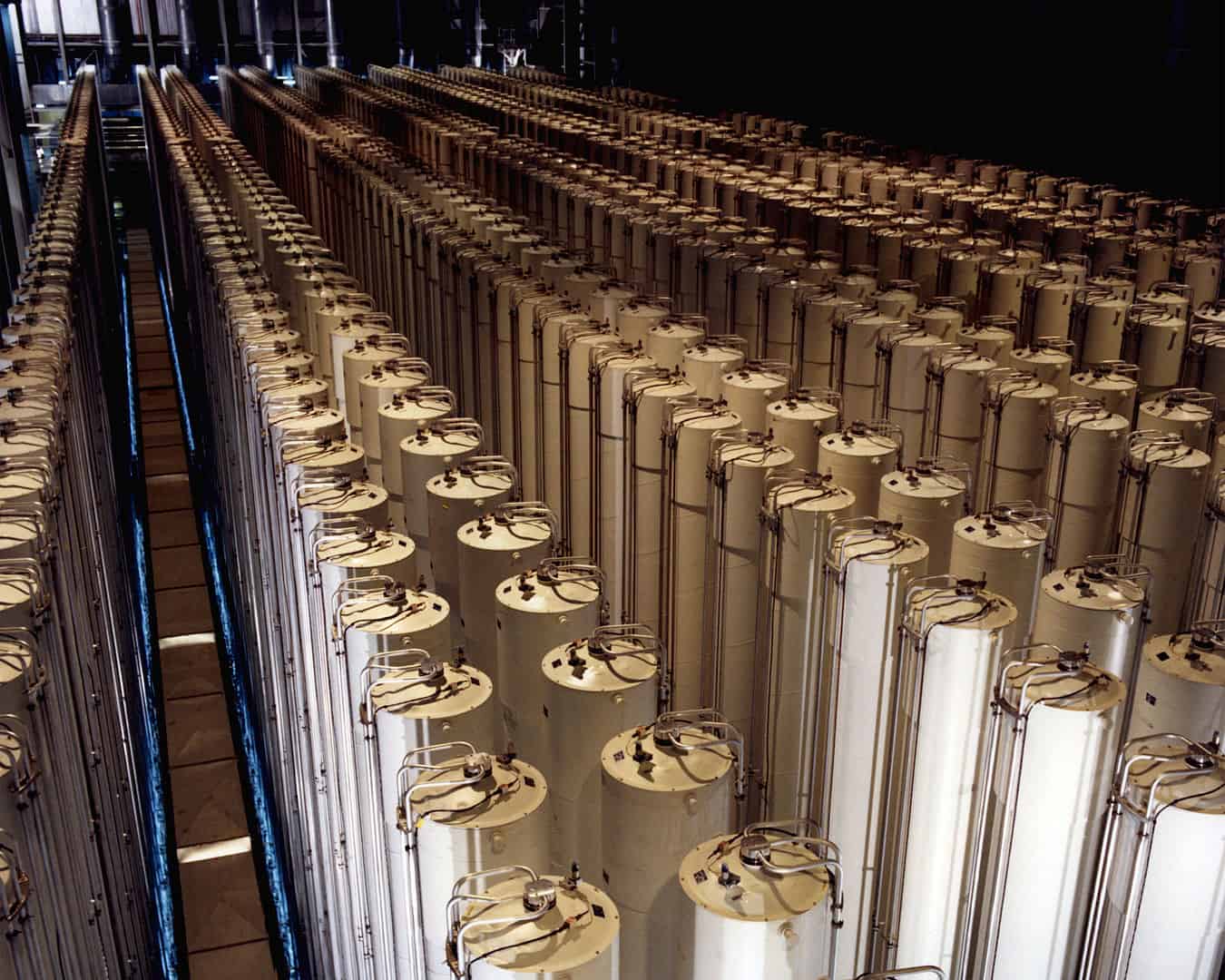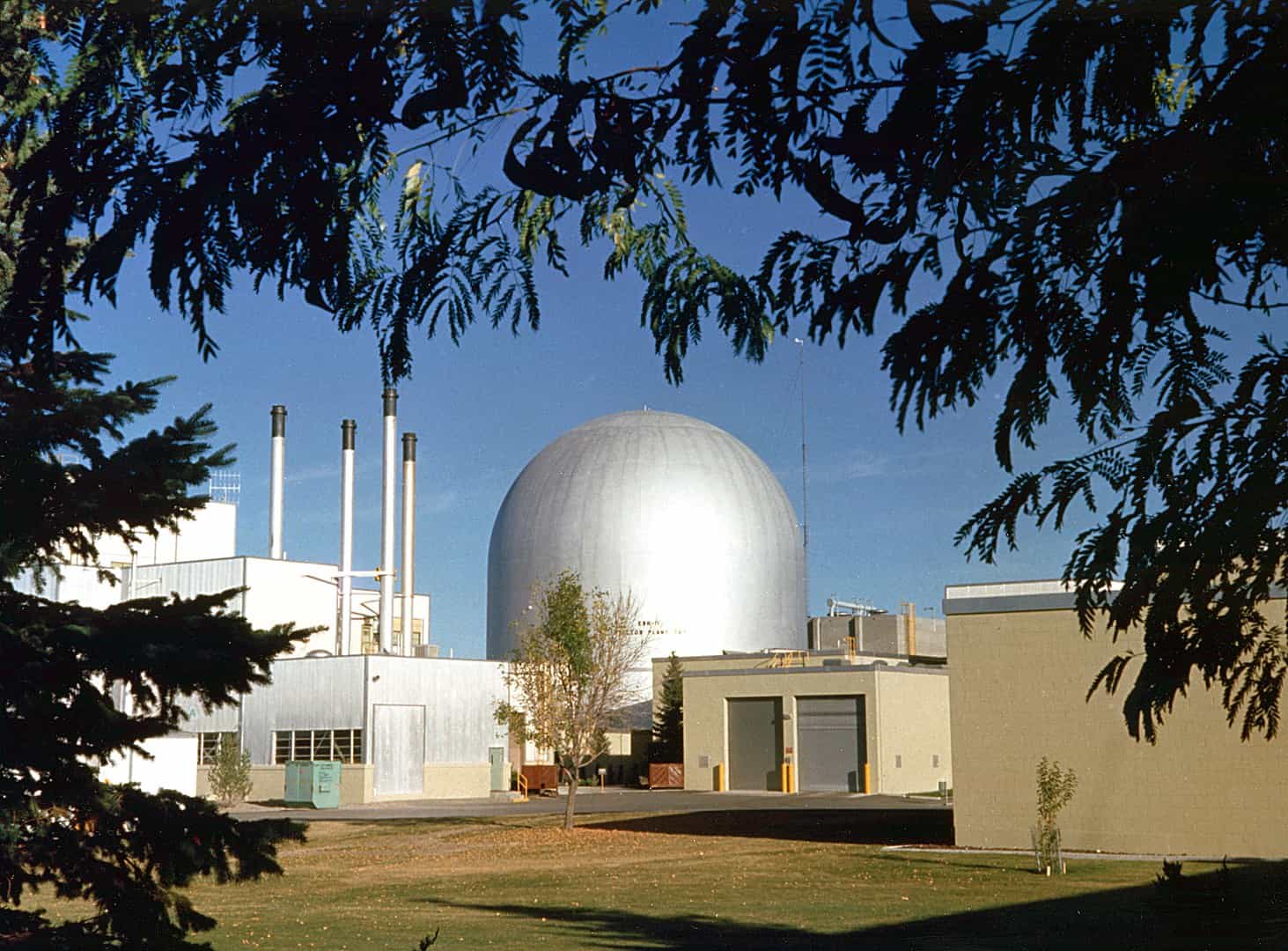
Normally, people would expect something used to make nuclear energy to be rare and expensive. Not in the case of uranium. If you’ve come across multiple Uranium facts lists in the past, you know that not to be true. In reality, uranium actually counts as one of the more common elements on Earth.
However, before it became popular, uranium took a while to establish itself. Heaps of it sat on waste rock piles near European mines for centuries. Following its formal discovery in the late 18th century, the element found a suitable niche in the coloring of glass and dinner plates. Scientists began researching uranium’s inherent potential as an energy source in the early part of the twentieth century, and it has since earned a place among the chemicals that characterize the “Atomic Age,” which we are still living in. Isn’t that fascinating?
Do you know that uranium can be an infinite power source? According to a 2010 study conducted by MIT, or the Massachusetts Institute Of Technology, the world’s uranium reserves are sufficient to produce power for decades!
If you ever do ingest uranium, you should thank your kidneys for keeping you alive. You’ll find traces of uranium can in rock, soil, and water, as well as in root vegetables and seafood. And if they ever enter your body, kidneys bear the responsibility of eliminating it from the bloodstream. At high enough levels, this process can damage cells. The good news is that kidneys can repair themselves after short-term, low-level exposure.
Experts also use uranium as a radiation barrier in medical procedures that use radiation therapy, as well as in the transportation of radioactive materials. Despite being radioactive, uranium’s large density makes it an efficient radiation stopper. Learn more about this fantastic element with these 40 Uranium facts.
- Uranium’s atomic weight of 238.03 Daltons makes it the heaviest of all primordial elements.
- A uranium atom always has 92 protons and 92 electrons.
- The isotope Uranium-238, which makes up 99% of all uranium on Earth, has 146 neutrons.
- Uranium-235, in contrast, only has 143 neutrons.
- Uranium-239 also has a half-life of 4.47 billion years, again contrasting to Uranium-235’s half-life of only 704 million years.
- The Romans used uranium ore as yellow coloring for their pottery.
- Europeans also used uranium ore as a coloring agent in the glass industry from the Late Middle Ages onward.
- German chemist Martin Klaproth discovered uranium in 1789.
- French chemist Eugene-Melchior Peligot first isolated uranium metal in 1841.
- French physicist Henri Becquerel used uranium in his experiments to discover radioactivity in 1896.
- The Germans and their allies in World War I used uranium as a substitute for molybdenum in making gun barrels
- Italian physicist Enrico Fermi used uranium in his experiments to discover beta radiation in 1934.
- American physicist Alfred Nier first isolated Uranium-235 in 1940.
- The United States Of America used uranium in the nuclear bomb they dropped on Hiroshima on August 06, 1945.
- The world’s first nuclear reactors used uranium as fuel on activation on December 20, 1951.
- Klaproth named uranium after the planet Uranus.
- Uranium has a density of 19.1 grams per cm³, 70% greater than lead’s density of 11.34 grams per cm³.
- Uranium still has a lower density than gold and Tungsten, though, at 19.3 grams per cm³.
- With a hardness of 6 on the Mohs Scale, uranium’s actually softer than quartz crystals.
- Uranium only poorly conducts electricity.
Military groups worldwide no longer use uranium to make nuclear weapons.
This comes from how a uranium core for a nuclear bomb needs around 80% Uranium-235 to reach critical mass. Anything less, and the bomb fizzles, exploding at only a very small fraction of its supposed power.
This led military groups worldwide to use plutonium instead of uranium in nuclear bombs, because plutonium core never fizzles. That said, militaries still use uranium, specifically depleted uranium, coming from how it has no Uranium-235 present.
Instead, it only has Uranium-238, a stable isotope with low radiation risk, and no risk at all of causing a nuclear explosion. Military groups use depleted uranium in armor-piercing shells, its density and weight making it better than steel. It also has use as a counterweight for fighter aircraft, and is also seen in inertial guidance systems such as gyroscopes.
Uranium remains the most common fuel used in nuclear power plants today.
As of 2019, 440 nuclear reactors all around the world use uranium as their fuel. Their electrical output totals at an estimated 2586 terawatt-hours, all without producing any carbon dioxide. In contrast, world solar power output only totals an estimated 629 Gigawatts in 2019, while wind power output in 2020 only totaled an estimated 733 Gigawatts. Scientists even estimate that 1 kilogram of uranium provides as much energy as 1.5 million kilograms of coal.
Natural nuclear reactors also have uranium as a fuel.
These extremely rare wonders of nature involve places where Uranium-235 naturally becomes concentrated. Enough so that they actually start and continue nuclear reactions until all available uranium is exhausted.
Japanese-American chemist and nuclear scientist Paul Kuroda first predicted such a phenomenon in 1956, with French physicist Francis Perrin discovering the only such place on Earth in 1972, Oklo in Gabon, with nuclear reactions dated as going back to 1.7 billion years ago, and continued for over 200,000 years before the uranium ran out.
Further studies by nuclear physicists have concluded that the natural reactor produced the equivalent of 100,000 kilowatts of power in its time. Scientists haven’t discovered any other natural reactors, but the possibility still exists.
Uranium usually needs special preparation for use as fuel.
Normally, natural uranium contains less than 1% of Uranium-235, the radioactive isotope of uranium. While still usable as fuel, natural uranium requires special reactor designs to properly use it as a fuel.
Those include Britain’s gas-cooled reactors, and the heavy water reactors of the 1940s and 1950s. Most reactors today, though, use enriched uranium as fuel, with Uranium-235 concentrations of up to 3%. Nuclear engineers have many ways to enrich uranium, with thermal diffusion as the oldest, going back to the 1940s.
This method became replaced by gaseous diffusion for most of the 20th century, but as of the 21st century, has become obsolete.
Today, nuclear engineers use gas centrifuges to enrich uranium, by spinning uranium gas at a high speed. Heavier Uranium-238 gets pulled away to a centrifuge’s edges, while lighter Uranium-235 gets concentrated near the center.

The Government of most countries strictly regulate enriched uranium.
Here’s a reassuring example of Uranium Facts. Do you know that reactor-grade uranium can still get processed further into weapon-grade uranium? That is a very dangerous thing to have.
As such, governments and organizations like the International Atomic Energy Agency (IAEA) keep track of all facilities with the ability to process uranium. They also keep track of how enriched uranium gets used, to make sure countries not recognized as nuclear-weapon states only use uranium for peaceful purposes.
The nuclear industry can recover uranium from nuclear waste.
In fact, scientists estimate that uranium actually makes up 96% of all nuclear waste. Other elements like americium, curium, and plutonium among others make up the remaining 4%. It might not sound like much, but their presence actually makes a reactor less efficient at best, and even unstable at worst.
As such, reactors regularly need to have their fuel reprocessed to remove nuclear waste. That said, every element making up nuclear waste produces dangerous amounts of radiation. This leads to the use of special methods to process nuclear waste, such as Plutonium and Uranium Recovery by EXtraction (PUREX), as well as URanium EXtraction (UREX) among others.
Scientists today continue to study better ways to enrich uranium.
Their research has the goal of making the process cheaper and more productive. Methods under research today typically involve various lasers, one of which, Atomic Vapor Laser Isotope Separation (AVLIS), has a laser ionizing Uranium-235. This allows them to get pulled away by a magnet away from the non-ionized Uranium-238.
Another method involves Molecular Laser Isotope Separation (MLIS), with the laser causing Uranium-235 to react with fluorine. This produces enriched uranium pentafluoride, ready for collection.
Uranium has many other peaceful applications.
Aside from nuclear fuel, the glass industry uses uranium salts to produce uranium glass. Natural uranium’s limited radioactivity keeps them safe for use, with the uranium giving the glass a yellow or green color, depending on the kind of uranium used.
Uranium glass also glows under ultraviolet light. The textile industry also uses uranium salts to process silk and wool, while scientists use uranium compounds as markers for electron microscopes. Scientists also use uranium to measure the age of the Earth, by tracking its presence in rocks. Even depleted uranium has a peaceful application as a radiation shield, as does enriched uranium, as radiation sources for x-ray machines.

Uranium storage in the former Communist Bloc became an issue after the Cold War ended.
After the Soviet Union’s collapse, international monitors estimated that at least 600 tons of weapons-grade uranium found themselves in an unsecured storage. At one point, monitors found uranium stored in a broom closet, and in another case, records of stored uranium written on index cards piled in a shoebox. This led to smuggling attempts from 1993 to 2005, with groups like terrorists trying to gain access to the uranium. The USA eventually provided Russia and other post-Soviet states an estimated $550 million in aid to secure their uranium stockpiles.
Uranium mines exist all over the world today.
Kazakhstan has the world’s most productive mines, producing an estimated 22,000 tons of uranium ore per year. That makes up an estimated 32% of the world’s annual uranium ore output. Canada trails after Kazakhstan with 9,000 tons, then Australia at 6,000 tons, Nigeria at 5,000 tons, Namibia at 4,000 tons, and finally Russia at 3000 tons. That said, scientists estimate that Australia may have the largest uranium deposits in the world. Uranium ore from Canada also has the best quality out of any in the world.
The uranium trade operates differently compared to markets for other metals.
Most metals like iron, aluminum, even gold and silver, find themselves openly traded on commodity markets. In contrast, the strict regulation of the nuclear industry means that uranium happens behind closed doors. Buyers and sellers directly negotiate contracts for the buying and selling of uranium with each other.
Uranium prices have fluctuated in recent years.
Uranium was at its most affordable in 2001, with one pound of uranium selling for only $7. That price steadily rose over the following years, driven by several causes, such as the flooding of Canadian uranium mines in Saskatchewan in 2006.
Expansion of the Chinese and Indian nuclear industries also factored in as a cause of the price increase. Prices eventually peaked in 2007, with 1 pound of uranium selling for $137, the highest in 25 years.
Prices dropped in succeeding years, but have steadily remained far above the 2001 price. Today, prices for uranium vary depending on the contract, but average between $29 and $35 per pound.
Uranium also exists dissolved in the sea.
Scientists actually estimate that all the world’s oceans have 4.6 billion tons of dissolved uranium in their water. In the 1980s, Japanese scientists developed a method using ion exchangers to extract uranium from the ocean. This has led scientists to see the ocean as a long-term source of uranium, for when mines on dry land become exhausted. At present, though, methods for extracting uranium from seawater remain economically unviable.

Humans can become exposed to uranium in various ways.
The most common way affects workers in uranium mines, who inhale the element with the air they breathe. People who live near nuclear test sites also inhale the element, as do people who live near and work in the nuclear industry.
People who work in the phosphate industry also become exposed to uranium, which has a presence in phosphate rocks. Uranium can also enter the human body through food, but this isn’t really a concern, as normally the body can filter the average 2 micrograms of uranium present in food. Thankfully, uranium cannot enter the body through the skin.
Uranium can have negative effects on the human body.
Excess amounts of uranium tend to build up in the bones, with the radiation causing damage to the DNA of the bone and surrounding tissues over time. This leads to higher chances of developing cancer of various kinds.
Excess uranium can also cause heavy metal poisoning, affecting organs such as the brain, the heart, the liver, and the kidneys. Symptoms include abdominal pain, diarrhea, nausea, and vomiting, with the possibility of death depending on the amount of uranium in the body.
Doctors once considered uranium a possible cause for Gulf War Syndrome.
The name comes from how it affected soldiers who fought in the Gulf War of 1990 to 1991. Symptoms included diarrhea, fatigue, insomnia, muscle pain, rashes, and even cognitive disorders.
Doctors studying the disease said that the disease possibly resulted from exposure to depleted uranium in vehicle armor and armor-piercing shells. However, the investigation concluded in 2008 said that depleted uranium did not cause Gulf War Syndrome. Instead, they concluded that exposure to Iraqi chemical weapons, as well as poisonous smoke for burning oil wells, had caused the disease.
Some life forms can survive high uranium concentration.
These include bacteria like Shewanella putrefaciens, which have the ability to substitute uranium for oxygen in their cellular processes. Other bacteria like Citrobacter, as well as the lichen Trapelia involuta, can absorb up to 300 times their mass in uranium.
They then process the uranium to form crystalline crusts of uranyl phosphate around them. This has led scientists to study them in the hopes of eventually applying their abilities to decontaminate water of nuclear waste.
Uranium plays a role in Earth’s geological functions.
Along with thorium and potassium isotopes, uranium in the Earth’s core provides the heat necessary to keep the outer core liquid. This, in turn, makes it possible for the outer core to generate Earth’s magnetic field from currents in the molten iron and nickel. The magnetic field then protects Earth from the solar wind, which could strip away the atmosphere. The heat from radioactivity in the core also transfers to the mantle, where additional radioactive elements also produce more heat, which drives plate tectonics, giving us volcanoes and earthquakes.
Uranium has an interstellar origin.
Like all elements, uranium originally came from space, but uranium also has the distinction of having an atomic mass greater than iron. This means uranium can only naturally form in a supernova when a giant star explodes with enough power to outshine a galaxy.
In that instant, iron fuses with extra neutrons as a result of a supernova’s heat and pressure. This causes it to form heavier elements that otherwise cannot form, such as lead, gold, silver, and of course, uranium.

Scientists today continue to study how to make more Uranium-235.
Today, the method in use involves so-called breeder reactors, where nuclear reactors force natural uranium to undergo nuclear reactions. This causes small amounts of Uranium-238 to break down into Uranium-235.
That said, the method proves inefficient, producing only small amounts of new Uranium-235. Also, instead of producing Uranium-235, Uranium-238 can also transmute into Plutonium-239, useful only for building nuclear weapons. As such, scientists continue to study newer and better ways to produce more Uranium-235 for use as nuclear fuel.
Was this page helpful?
Our commitment to delivering trustworthy and engaging content is at the heart of what we do. Each fact on our site is contributed by real users like you, bringing a wealth of diverse insights and information. To ensure the highest standards of accuracy and reliability, our dedicated editors meticulously review each submission. This process guarantees that the facts we share are not only fascinating but also credible. Trust in our commitment to quality and authenticity as you explore and learn with us.
